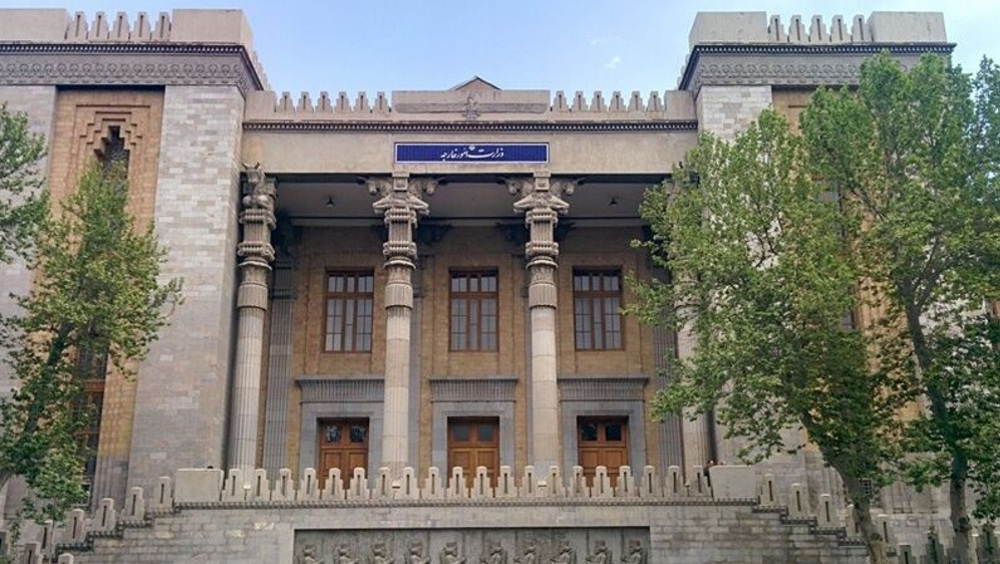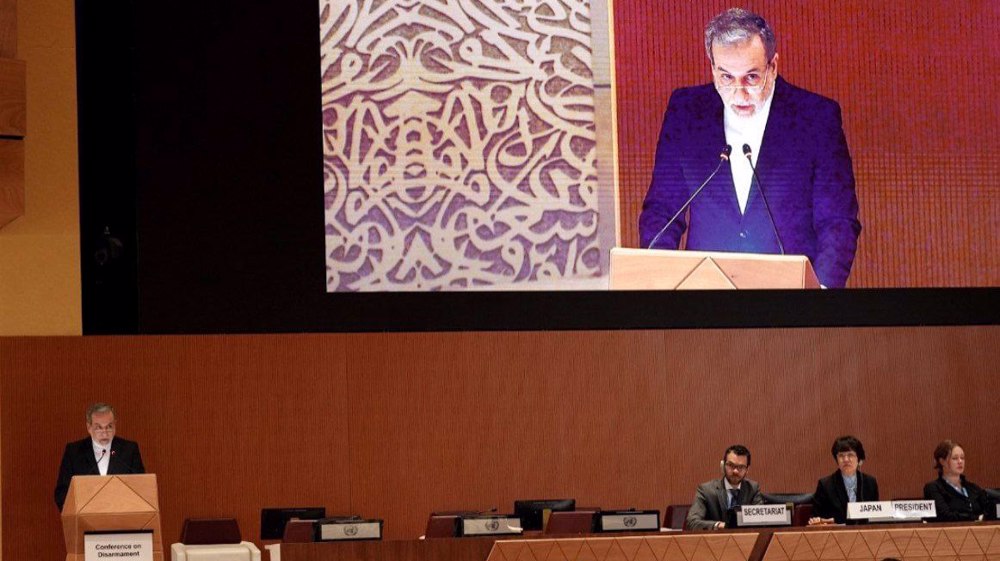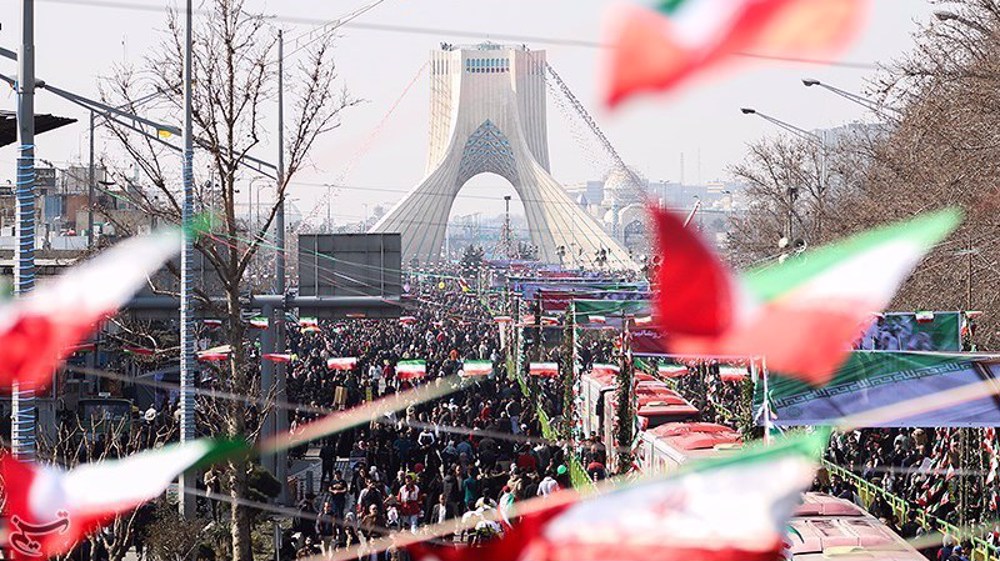Iran calls in Russia, UK envoys over pic reminiscent of infamous 1943 Allied summit
Iran has called in the Russian and British ambassadors to Tehran over the release by Moscow’s Embassy of a controversial picture, which was taken to bring to mind a World War II-era conference in Tehran that lives in infamy in the historical memory of the Iranian nation.
Russian Ambassador Levan Dzhagaryan was called in by the Iranian Foreign Ministry to receive representations over the release of the picture on Twitter, which shows him and his UK counterpart meeting on the veranda of the Russian Embassy in Tehran, the site of a 1943 strategy meeting of the then ex-Soviet, US and British leaders — namely Joseph Stalin, Franklin Roosevelt, and Winston Churchill — two years after the Anglo-Soviet invasion of Iran.
During the meeting on Thursday, the Russian diplomat explained that publishing the photo had merely been meant to highlight the WWII-era alliance with Britain against the Nazi army, and had no anti-Iran intention at all.
He emphasized the deep and strategic ties between Iran and Russia and expressed regret that the picture had hurt the feelings of the friendly Iranian people.
1/2 Taking into account the ambiguous reaction to our photo, we would like to note that it does not have any anti-Iranian context . We were not going to offend the feelings of the friendly Iranian people.
— Russian Embassy, IRI (@RusEmbIran) August 12, 2021
2/2 The only meaning that this photo has to pay tribute to the joint efforts of the allied states against Nazism during the Second World War. Iran is our friend and neighbor, and we will continue to strengthen relations based on mutual respect
— Russian Embassy, IRI (@RusEmbIran) August 12, 2021
Having heard the explanations, the director-general of the Iranian Foreign Ministry’s Eurasia section said the release of such a photo was still “unacceptable,” and that it was a must for foreign missions to pay close attention to the political, cultural and historical exigencies of the host state.
The Russian official was also told that the great nation of Iran had time and again proved over the past 42 year since its Islamic Revolution that it would seriously work to safeguard the independence that the country achieved on the back of historical resistance and sacrificial struggles, and that it would adjust its ties, as a powerful state, with other countries based on national dignity.
UK envoy: No ill intention behind Russian embassy photo
Later in the day, the Iranian Foreign Ministry invited the British Ambassador Simon Shercliff to explain about the photo.
Iranian Foreign Minister Mohammad Javad Zarif’s assistant, who is also the Foreign Ministry’s Director General for Western Europe, told the British envoy that it was an unacceptable measure, which “has hurt the national pride of the Iranian nation.”
“The great people of Iran have proven throughout history that they reject any move emanating from arrogant thoughts and will resist against it,” the Iranian official added.
The British ambassador, for his part, expressed regret over the misunderstanding created by the photo.
Shercliff said he had high respect for the Islamic Republic of Iran and the great people of Iran and its history, noting that there was no ill intention behind the photo and the two ambassadors only intended it to be a reminder of the alliance between Russia and the UK against the Nazi Germany during the World War II.
During the historical conference, the three WWII Allies agreed to open a new front against the then Nazi Germany about two years prior to the end of World War II, a decision that changed the fate of the war in favor of the trio.
However, the image of the so-called “Big Three” is infamous to the Iranian people since it is reminiscent of the violation of their country’s national sovereignty by the three countries, two of which had exploited the then Pahlavi regime’s inefficacy and submissiveness to deploy troops to Iranian soil despite the fact that Tehran had declared neutrality in the war.
The Pahlavi regime had neither been informed of the vital meeting on Iranian soil nor invited to it.
“Ambassador Levan Dzhagaryan’s meeting with the new head of the Flag of United Kingdom British diplomatic mission in Iran Simon Shercliff on the historical stair, where the 1943 Tehran conference was held,” read the caption of the image tweeted by the Russian Embassy in Tehran.
The image, however, drew anger and criticism among Iranians, with the country’s senior officials quickly reacting to the image that they viewed as an insult to the Islamic Republic.
‘Extremely inappropriate’
Foreign Minister Zarif took to Twitter to denounce the image as “extremely inappropriate” and said, “Need I remind all that Aug. 2021 is neither Aug. 1941 nor Dec. 1943.”
“The Iranian people have shown — including during the JCPOA talks — that their destiny can NEVER be subject to decisions in foreign embassies or by foreign powers,” Zarif added, using an acronym for the official name of the 2015 nuclear deal, the Joint Comprehensive Plan of Action.
I saw an extremely inappropriate picture today.
— Javad Zarif (@JZarif) August 11, 2021
Need I remind all that Aug. 2021 is neither Aug. 1941 nor Dec. 1943.
The Iranian people have shown—including during the JCPOA talks—that their destiny can NEVER be subject to decisions in foreign embassies or by foreign powers. pic.twitter.com/0syILRec5q
The talks culminated in 2015 in the signing of a multilateral nuclear deal on the Iranian nuclear program and resumed following the withdrawal of the US in May 2018.
During all the negotiations revolving around the deal, the Iranians have stood on their right to develop nuclear technology for peaceful purposes and against America’s attempts at imposing its own will on the nation.
Parliament chief demands apology
Similarly, Parliament Speaker Mohammad-Baqer Qaibaf censured the meeting between the Russian and UK envoys as “inappropriate and inconsistent with diplomatic protocols,” calling on the Foreign Ministry to follow up on the insult.
“Both ambassadors must swiftly issue an official apology, otherwise firm diplomatic action will be necessary,” the Parliament chief.
Faced with the anger in Iran, the Russian Embassy tried to justify the meeting at the specific site with two more tweets on Thursday and said, “We would like to note that it does not have any anti-Iranian context. We were not going to offend the feelings of the friendly Iranian people.”
“The only meaning that this photo has to pay tribute to the joint efforts of the allied states against Nazism during the Second World War. Iran is our friend and neighbor, and we will continue to strengthen relations based on mutual respect,” it added.
Tehran has friendly, strategic relations with Moscow since both sides share similar positions on many regional and international issues; however, the post-Islamic Revolution Iran has on numerous occasions proved that it does not tolerate any attack on or insult to its sovereignty and independence — a red line for the nation — by either the Westerners or the Easterners.

Iran summons Polish envoy over 'baseless, biased' drone claims

‘Misguided policies’: Araghchi says unjust sanctions inflict suffering on innocent Iranians

‘Grave threat’: Iran says Israel’s nukes endangering world, blasts US nuclear spending spree
Australian senator smeared by anti-Iran groups for saying Iranian women 'have a voice'
Hezbollah's display of power proved resistance cannot be eliminated: Iran parl. speaker
Israel escalates West Bank raids as official says regime seeking to complete Gaza genocide
Palestinian man dies in Israeli prison as Foreign Ministry urges intl. probe into regime’s crimes
Putin says not opposed to Europeans’ involvement in Ukraine talks
VIDEO | Iranian Kurdish protesters demand European action against PKK, PJAK terror
VIDEO | Israel expands offensive in northern West Bank, deploys tanks to Jenin
VIDEO | Spaniards fill streets of Cádiz in solidarity with Palestine







 This makes it easy to access the Press TV website
This makes it easy to access the Press TV website